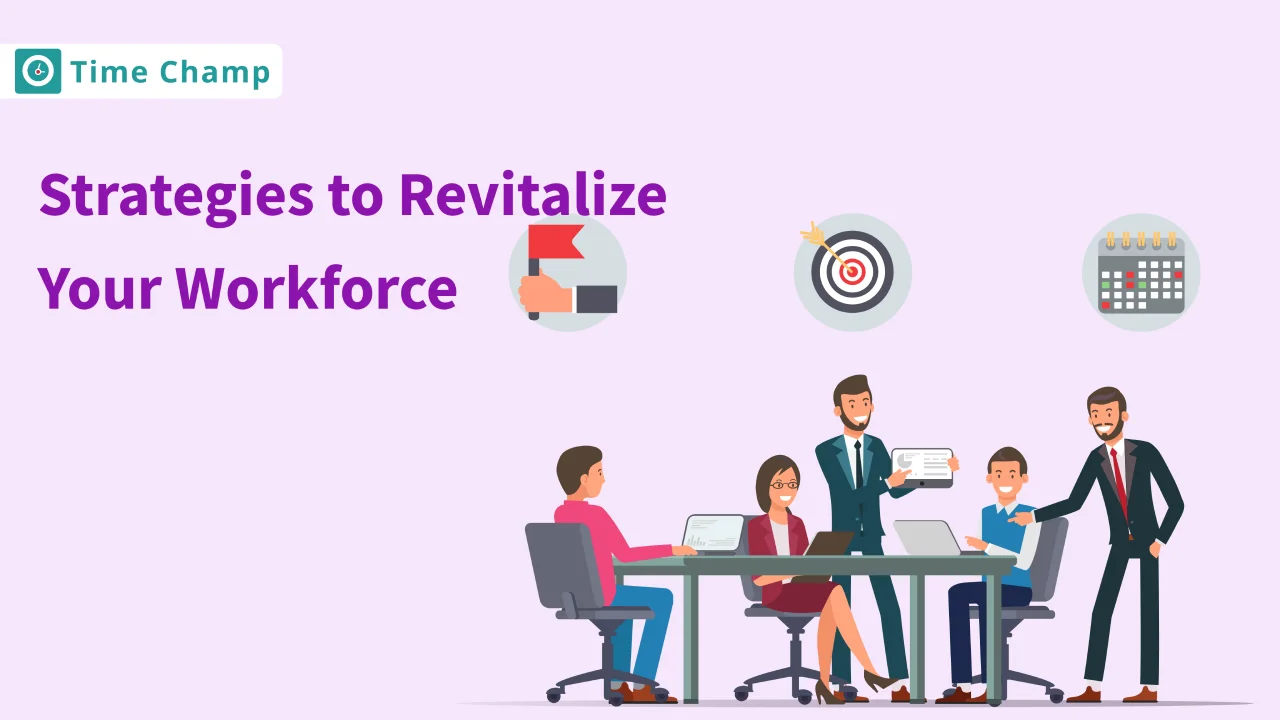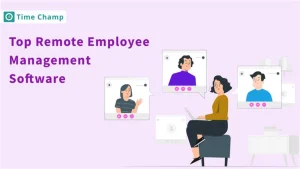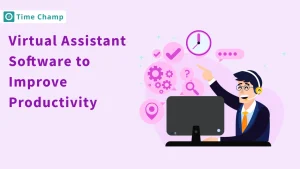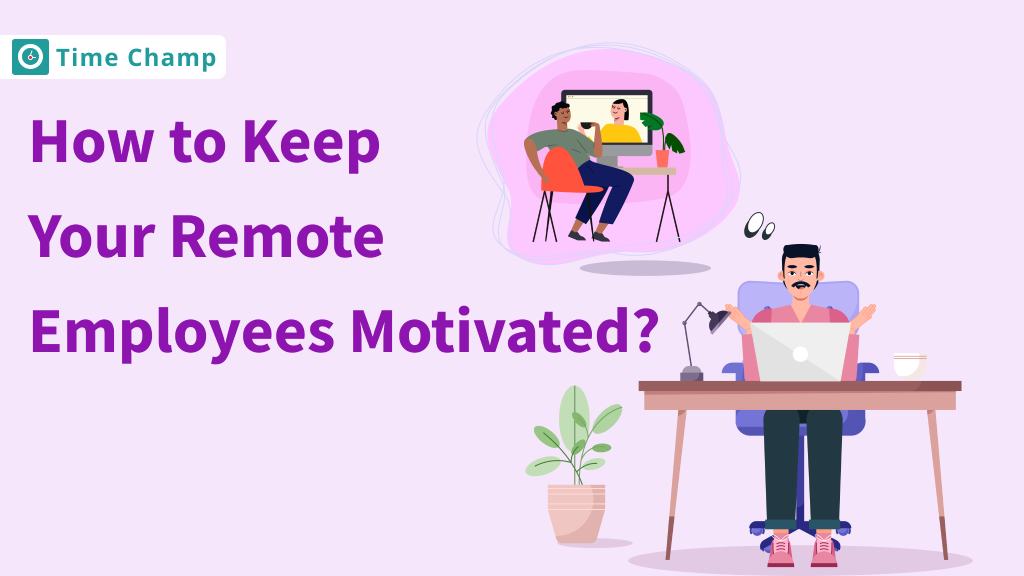In a world of incessant competition and rapidly evolving markets, the success of a company hinges not just on innovative products or cutting-edge technologies but significantly on the motivation and drive of its workforce. Because the enthusiasm and vigor that employees bring to their jobs are of utmost importance in determining overall organizational performance and harmony. Thus, how does a company maintain high motivation levels in its staff? The post, titled “ What are the effective ways of motivating employees? ” answers these questions with examples both good and bad.
While unobtainable, motivation is an invisible yet ubiquitous goal that pushes employees to live up to their internal promises and make something of themselves. Nonetheless, there is no single recipe for keeping the workforce motivated. The knowledge of human psychology, careful preparation, and a bit of imagination are needed. Leaders who grasp the nuances of “ways to motivate workers” and “ways to motivate staff” can unlock the immense potential lying dormant within their teams.
The carrot-and-stick model of the past has been replaced by increasingly sophisticated and comprehensive “ methods to motivate the workforce. ” Leaders no longer should’ t simply delegate everyday tasks, but must also be capable designers of an enlightening fire to help them perform. With this in mind, we examine various forms of ‘motivation to employ workers’ and ‘motivation for workers,’ based on both modern organizational methods and psychology.
Managers who recognize the uniqueness of every employee can adjust motivational methods accordingly to match personal aspirations and an organization’s values. Following the “ ways of motivation to employees, ” we will talk about how to use the principles of autonomy, mastery, and purpose to weave an energizing work environment. If you’re running a start-up or working for a multinational conglomerate, mastering the art of how to get staff moving ahead briskly is one of life’s most valuable skills.
Come along for the ride as we explore how employee motivation works and give you techniques to help enrich your work environment with vitality, loyalty, and a sense of achievement. First, let’s look at some concrete methods. Many tools can help you keep track of how employees spend their time and then make decisions based on this data to motivate the team. Time Champ is one example. Experience the benefits of Time Champ for your organization by visiting.
1. Understanding Motivation in the Workplace :
Recognition and Reward that Count
Recognition and rewards are some of the simplest but most effective methods to motivate employees. Being made to feel valued is a fundamental human need, and when employees are recognized for their efforts, it reinforces what they think of themselves within the company but also makes them likely to keep working hard. There are many ways of implementing an effective reward system, including monetary awards and protecting honor.
Crafting a Collaborative Environment
Providing Growth and Development Opportunities
If employees can see a direction available to them within the system, then they will be more likely to remain motivated. Professional growth opportunities, on the other hand, are even more for motivating workers and enriching company skills and knowledge. To ensure adequate motivation and competitiveness among employees, employers must continue to invest in furthering the workforce’s human capital.
2. Strategies for Building Sustainable Employee Motivation:
Embracing Autonomy and Flexibility
Today’s worker wants some degree of autonomy in his work. If one can enable employees to make decisions directly related to their work and provide flexible working conditions, this is the best way of motivating staff. Because people feel they have been given responsibility for managing their jobs, they are more willing to pour themselves into them.
Aligning Personal and Organizational Values
Furthermore, motivating the employees means making sure there is a perfect fit between personal values and goals, on the one hand, and those of the company. This kind of fitting provides work with more purpose and ties staff into the organization’s affairs, nurturing those who are ambitious about their work.
Leveraging Technology for Empowerment
There are plentifully available tools that can be used to ‘motivate the workforce’ today. True to today’s digital age, applications such as Time Champ provide feedback on how much time is being spent.
Employees not only use their time, but this is also a way for managers to recognize efficiency and productivity. Such tools can help encourage a culture of self-improvement and motivation.
3. Nourishing a Positive Workplace Culture:
Encouraging Open Communication
Communication is the foundation for motivation A culture of open communication. Secondly, employees should have the right and desire to raise their thoughts, ideas, and concerns. Matters like regular feedback loops and open-door policies can help build a trusting environment that will “ encourage workers to give their all.
Leadership That Motivates Employees
The primary influence on the tone of motivation is leaders. By their actions and words, leaders could motivate staff to follow a vision. Real leadership mixed with compassion and assistance leads directly to high levels of employee motivation.
Building Resilience and Well-being
This is also because a motivated workforce can withstand hard times. If companies worry about the staff’s mental and physical health, they will also find that their employees are more spirited in their work. Work-life balance and employee welfare initiatives also provide a big boost to overall motivation.
To explore further how technology can aid in fostering a positive workplace culture and track employee engagement, follow this link to Time Champ
4. Using incentives and benefits to further fuel motivation:
Tailoring Incentives to Employee Preferences
You need to understand that when you speak of motivating the workforce anything goes. Something that motivates one employee may not affect another. Personalization is key. In this way, employers can offer each team member an incentive program based specifically on their interests and needs.
These incentives include bonuses, stock options, and everything from more paid time off to flexible work schedules.
The Role of Health and Wellness Programs
A healthy employee is a motivated employee. Comprehensive health and wellness not only shows the company’s concern for its employees, they are ultimately a potent motivator. This means that companies should encourage their staff to take care of both their mental and physical health by providing things such as gym memberships, wellness retreats, or mental health support.
Financial Wellness and Security
The second pillar of the ways to motivate employees is guidance in financial wellness. This type of program can relieve the burden on employees struggling to put their financial plans together and give them a feeling of security, allowing them to concentrate better at work. Offer educational seminars on retirement planning, budgeting, and financial counseling as part of the benefits package.
5. Setting Clear Goals and Expectations:
Clear Communication of Goals is the Keynote to Success
Most important is the ability to make goals and expectations clear, allowing staff to understand what is expected of them and how their performance will be evaluated. Just like people need shared targets and clear goals, common milestones also give them a sense of direction and purpose.
The Advantages of a Goal-Based Workplace
The goal-oriented workplace helps staff to see the broader picture and appreciate how their work is contributing to attaining corporate goals. This may mean setting individual, team, and company-level targets that are ambitious yet attainable so that employees are constantly pushing each other to be better.
Tracking Progress and Celebrating Achievements
To motivate employees, he argues that you have to keep tabs on how they are proceeding toward their goals and applaud their successes. Instead, recognition can be done through public awards or personal congratulations whenever milestones are reached. Recognition of the little successes adds to potential and creates an energy of constant growth and encouragement.
6. Promoting Work-Life Balance:
Understanding the Need for Balance
Work-life balance isn’t just a slogan; it is essential to a motivated workforce. When employees feel that their private lives are handled with dignity, they display more interest and enthusiasm in their public life. Using telecommuting, flexible scheduling, or compressed workweeks can have a big impact on employee satisfaction and motivation.
Encouraging Time-Off and Disconnection
But to foster balance, companies have not only to offer time off but also encourage exercise. Taking time away from the office to recharge also helps employees face even bigger challenges with renewed enthusiasm. If employees can learn to take time off without feeling out of the loop, they will be more motivated and healthier. To establish a culture where this is possible requires effort on many fronts.
Addressing Overwork and Burnout
While trying to motivate the workforce,it is necessary to be aware of burnout symptoms. These can be significant demotivators. Companies can reduce these risks to a minimum by actively reorganizing burdens, providing assistance, and encouraging frequent pauses during work. This is sure to maintain worker enthusiasm.
But don’t forget that you can upgrade productivity without sacrificing employee well-being. Through the use of tools such as Time Champ, managers can keep an eye on work trends and make sure teams are not working too hard, which is partly in keeping with building a sound work-life balance.
7. Promoting innovation and creativity:
Fostering a Culture of Innovation
Workplace climate In an effective workplace, experimentation, and creativity are encouraged. When employees are encouraged to think critically, they also feel increasingly invested in their work. Allowing employees to take risks and accept failures as learning experiences creates a situation in which the impetus to innovate is provided.
Providing Resources for Creative Endeavors
But if you want to motivate employees, then give them the tools and resources they need to try out their imaginings. This may mean a set-aside period for brainstorming meetings, innovation laboratories, or special budgets dedicated to projects conceived and initiated by employees. Studies show that when staff are confident they will have the backing of management to investigate something new, they will work with even greater enthusiasm.
Recognizing and Rewarding Creative Contributions
Rewarding employees who provide ideas and highlight their good work can stimulate others to be creative. Displaying results, even if they are small, engenders a feeling of accomplishment and encourages the entire staff to think up new ideas. This creative cycle fosters a constantly motivated, thoughtful workforce.
8. Building Strong Teams and Relationships :
Team Dynamics and Motivation
One way to motivate employees is to build strong teams in which members help each other through both support and challenge. Once employees feel that they belong in a group whose success depends on individual contributions, their motivation goes up. Good relations and communication between team members are also key in this process.
Strategies for Team Building
Team building activities can establish mutual reliance and make employees feel more at ease with each other, resulting in enhanced cooperation and a greater sense of empowerment. Whether through workshops, retreats, or skill-building exercises, these sessions remove barriers between the team and allow it to be more cohesive and motivated.
Encouraging Peer-to-Peer Recognition
Leadership requires peers, and if the recognition comes from both sides it will be all the greater. Establishing systems that allow employees to affirm each other’s work and accomplishments, creates a culture of appreciation and mutual respect, adding to the motivation and morale of staff.
9. Embracing Diversity and Inclusion:
Inclusive Workplaces as a Motivation Factor
Because difference is the heart of diversity, inclusion means a workplace filled with various perspectives and backgrounds. However, respecting different backgrounds and creating a unified culture where everyone is treated as an equal can go a long way toward eliminating these problems.
When employees are aware that the company values their special qualities, they feel motivated to do a better job.
Implementing Diversity Initiatives
Intentionally promoting diversity through various channels, including training courses, mentorship programs, and diversified recruitment methods, also increases their motivation at work. When employees know that their organization is truly dedicated to inclusivity, it can give them the confidence to actively participate in company development.
Leadership for Inclusion The impact of leaders on their organizations is vast.
When leaders show inclusion in practice, it becomes a model that others will follow. They should demonstrate inclusive behavior, listen to others, and solicit opinions from other members of the team to make employees feel that their hard work will be rewarded.
Conclusion
To sum it up, inspiring the workforce is a composite undertaking that necessitates creativity, dedication, and familiarity with human psychology. These ideas, from providing recognition and rewards to building a culture that is inclusive and friendly, aim to capitalize on the various constituencies of your staff. While putting these motivational strategies into practice, be sure to tailor your approach to the nature of your particular team.
Likewise, you need to steer these strategies with instruments that improve your capacity for analysis and boost employee performance. You can use platforms like Time Champ to understand how your team functions, and find new ways to motivate everyone. To learn more about how to infuse your workplace with energy and commitment, give Time Champ a try
Now, let’s bring your organization’s motivational strategies right up to date and build an environment in which people are not only satisfied but enthusiastically engaged in fulfilling their potential.
FAQs on employee motivation:







